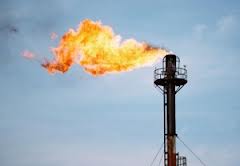RL Blogs

By Process Pro Eric
Aug 17, 2019Reducing Refinery EII to remain profitable through all cycles of the refining business. |
||||
There’s only one thing you need to remember when searching for energy improvement ideas… Reduce Heat to the Environment That’s it. It’s that simple. Find the sources of heat to the environment and try to reduce the amount of heat lost. So let’s start with some of the heat sources.
Now let’s consider some ideas to reduce heat from these sources.
Heater Stacks - Optimize heater performance including excess O2, draft, and fuel source. It’s vital that performance testing is done in order to set optimal operating ranges for varying levels of heater duty.
Fin Fans and Cooling Towers – Exchangers with a significant amount of heat transfer to air or cooling water are a waste of energy. If a hydrocarbon stream that needs preheat is available for heat exchange instead it could be the start of a very lucrative project.
Heat Exchangers – Always ask yourself the question “Why?”. Heat exchangers play an integral role in refinery energy efficiency. They also have an important role in managing personnel and process safety, so you need to understand the role of each exchanger in your unit. Regardless of the application, there likely is an option for you to bypass some process flow around the exchanger to find energy savings. Sounds counter-intuitive? I bet that it does, but do some deep thinking and you’ll figure out what I’m suggesting.
Steam Vents and Steam Leaks – Let’s clarify one thing to start… a steam vent is a giant steam leak. There are many refineries that vent steam due to sub-optimized steam usage. In most cases, these vents can be completely closed with good process engineering focus. As for steam leaks, it’s a fairly straight forward exercise to determine the payoff. The benefit of fixing steam leaks is typically greater than the maintenance cost. It just takes a concerted effort to execute and track the work.
Tanks – Scrutinize each intermediate feed stream to a unit that goes through a tank. Is there any reason why you couldn’t feed that material hot from one unit to another? Putting material in a big tank, letting it cool off, and then reheating it in another unit is a giant waste of energy. Cut out the middle man (the tank in this case) and bank the energy savings. And in cases where that’s not feasible, better insulation on the tank can make a big difference as well.
Vessels – A lot of energy is lost to the atmosphere off vessels and even piping. Good insulation can go a long way towards improving energy efficiency.
Beyond mechanical improvements, think more creatively and ask if you truly understand your distillation column energy balance. I will bet a month of my pay that most refiners can find 5% energy reduction in their distillation towers. The fact is, energy optimization and margin optimization are often competing forces and many refiners do not fully understand all the trade-offs.
As a final nugget, I will suggest to also evaluate pump and compressor spillbacks. While spillbacks play an important process safety role, some refiners have excessive spillback rates. Spinning gas and liquids around in circles obviously consumes energy, so make sure that you understand the process requirements and define proper bounds.
EII, a world standard benchmark for energy efficiency, is a registered trademark of Solomon Associates. | ||||
|
|










